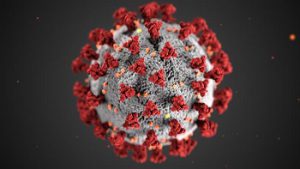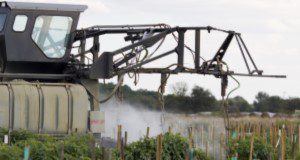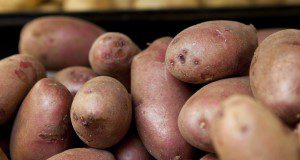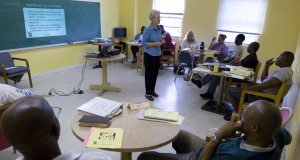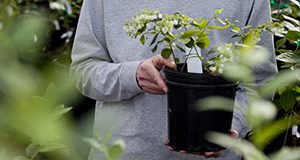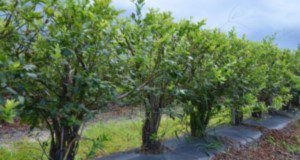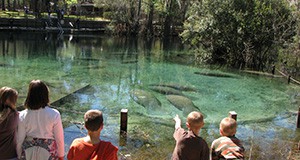These flyers, written by Natalie Seymour, Mary Yavelak, Candice Christian, and Ben Chapman (NC State University Extension), provide quick, digestible information regarding prevention of COVID-19 and procedures for food service, grocery stores, and other food-related businesses. This flyer in particular provides information about food safety in relation to COVID-19. Published by the UF/IFAS Food Science and Human Nutrition Department.
https://edis.ifas.ufl.edu/fs341
COVID-19 Preventative Measures and FAQs for Food-Related Businesses
These two new series, written by Natalie Seymour, Mary Yavelak, Candice Christian, and Ben Chapman (NC State University Extension), provide quick, digestible information regarding prevention of COVID-19 and procedures for food service, grocery stores, and other food-related businesses. There are 15 flyers total, published by the UF/IFAS Food Science and Human Nutrition Department.
https://edis.ifas.ufl.edu/topic_series_covid-19_faqs
https://edis.ifas.ufl.edu/topic_series_covid-19_preventative_measures
Adecuado lavado de manos para cuidadores
 El lavado de las manos es una forma importante de reducir la transferencia fecal-oral de gérmenes que causan enfermedades. Los niños pequeños y los ancianos con limitaciones tienen menos capacidad para combatir los gérmenes que otras personas. Como cuidador, usted puede ayudar a reducir el riesgo de transmisión de enfermedades en ambientes con multitudes mediante el uso de los adecuados procedimientos de lavado de manos. This is the Spanish language version of Proper Hand Washing for Caregivers (FCS8782Eng/FY724).
El lavado de las manos es una forma importante de reducir la transferencia fecal-oral de gérmenes que causan enfermedades. Los niños pequeños y los ancianos con limitaciones tienen menos capacidad para combatir los gérmenes que otras personas. Como cuidador, usted puede ayudar a reducir el riesgo de transmisión de enfermedades en ambientes con multitudes mediante el uso de los adecuados procedimientos de lavado de manos. This is the Spanish language version of Proper Hand Washing for Caregivers (FCS8782Eng/FY724).
https://edis.ifas.ufl.edu/fy1486
Adecuado lavado de manos para ninos en la escuela
 Los gérmenes pueden esconderse debajo de uñas largas y en manos sucias. Mantener las uñas cortas y lavarse las manos con frecuencia son las cosas más importantes que puedes hacer para evitar que los gérmenes te enfermen. Los gérmenes que causan enfermedades como resfriados, gripe, diarrea y vómitos pueden llegar a tus manos al tocar las cosas a tu alrededor. Las personas, las mascotas, los alimentos crudos, los juguetes, la tierra y los objetos utilizados en nuestra vida diaria pueden tener gérmenes. Lavarte las manos adecuadamente ayuda a eliminar los gérmenes. This is the Spanish language version of Proper Hand Washing for School Children (FCS8783Eng/FY725).
Los gérmenes pueden esconderse debajo de uñas largas y en manos sucias. Mantener las uñas cortas y lavarse las manos con frecuencia son las cosas más importantes que puedes hacer para evitar que los gérmenes te enfermen. Los gérmenes que causan enfermedades como resfriados, gripe, diarrea y vómitos pueden llegar a tus manos al tocar las cosas a tu alrededor. Las personas, las mascotas, los alimentos crudos, los juguetes, la tierra y los objetos utilizados en nuestra vida diaria pueden tener gérmenes. Lavarte las manos adecuadamente ayuda a eliminar los gérmenes. This is the Spanish language version of Proper Hand Washing for School Children (FCS8783Eng/FY725).
https://edis.ifas.ufl.edu/fy1487
Adecuado lavado de manos para manipuladores de alimentos
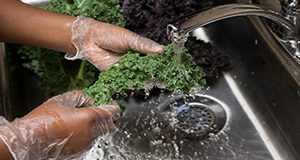 El lavado de manos es uno de los principales métodos utilizados para ayudar a prevenir enfermedades transmitidas por los alimentos. El lavado adecuado de las manos reducirá el riesgo de transmitir microorganismos, como bacterias, virus y otros agentes, que causan enfermedades a las personas que comen los alimentos que manipulas. Si necesita usar desinfectante para las manos, ¡siempre lávate las manos primero! La suciedad, los alimentos o cualquier otra cosa en las manos hacen menos eficaz el efecto del alcohol. ¡No use desinfectante para manos en lugar de lavarse las manos! This is the Spanish language version of Proper Hand Washing for Food Handlers (FCS8784Eng/FY726).
El lavado de manos es uno de los principales métodos utilizados para ayudar a prevenir enfermedades transmitidas por los alimentos. El lavado adecuado de las manos reducirá el riesgo de transmitir microorganismos, como bacterias, virus y otros agentes, que causan enfermedades a las personas que comen los alimentos que manipulas. Si necesita usar desinfectante para las manos, ¡siempre lávate las manos primero! La suciedad, los alimentos o cualquier otra cosa en las manos hacen menos eficaz el efecto del alcohol. ¡No use desinfectante para manos en lugar de lavarse las manos! This is the Spanish language version of Proper Hand Washing for Food Handlers (FCS8784Eng/FY726).
https://edis.ifas.ufl.edu/fy1488
Adecuado lavado de manos para adultos mayores
 Lavarse las manos es una forma importante de reducir la propagación de enfermedades infecciosas. Los gérmenes de origen humano y animal pueden transmitirse a las manos, que a su vez pueden transmitir los gérmenes a otras personas, alimentos y cualquier otra cosa que toquen. El adecuado lavado de las manos puede reducir la cantidad de microorganismos infecciosos en nuestras manos y reducir el riesgo de contraer algunas enfermedades. This is the Spanish language version of Proper Hand Washing for Elders (FCS8785Eng/FY727).
Lavarse las manos es una forma importante de reducir la propagación de enfermedades infecciosas. Los gérmenes de origen humano y animal pueden transmitirse a las manos, que a su vez pueden transmitir los gérmenes a otras personas, alimentos y cualquier otra cosa que toquen. El adecuado lavado de las manos puede reducir la cantidad de microorganismos infecciosos en nuestras manos y reducir el riesgo de contraer algunas enfermedades. This is the Spanish language version of Proper Hand Washing for Elders (FCS8785Eng/FY727).
https://edis.ifas.ufl.edu/fy1489
How to Properly Dispose of Unwanted Medications
Properly disposing of expired or unused medications can help reduce the prevalence of prescription drug abuse in Florida. It also helps prevent accidental ingestion by children or pets, helps prevent accidentally taking the wrong medication, and prevents medications from entering water sources. This new 3-page publication of the UF/IFAS Department of Soil and Water Sciences provides some dos and don’ts for disposing of your medications. Written by Alexander J. Reisinger.
https://edis.ifas.ufl.edu/ss680
Tank-Mixing Pesticides without Disasters
Tank-mixing several pesticides is a common practice in conducting pest control. Tank mixes can consist of much more than just pesticides, such as fertilizers, micronutrients, and adjuvants. However, applicators must be aware of potential problems given that there are so many potential combinations when combining these products. Manufacturers cannot possibly test for all of these combinations, so both chemical and physical incompatibility are a concern with the practice. This new 4-page document, written by Frederick M. Fishel and published by the UF/IFAS Pesticide Information Office, describes some common-sense practices to help overcome costly tank-mixing errors.
https://edis.ifas.ufl.edu/pi285
Fertigation via Center Pivot Irrigation for Commercial Potato Production in Florida
Potatoes are an important crop in the United States, and Florida is ranked the 7th producer nationwide for potato production. In Florida, potatoes are mainly planted on sandy soils with low nutrient- and water-holding capacities. Nitrogen is the most limiting nutrient in these soils. Adopting efficient fertilization methods such as fertigation is imperative for minimizing leaching and improving use efficiency of nitrogen. This new 12-page article provides step-by-step guidelines for fertigation practices for commercial potato production. Written by Xiangju Fu, Guodong Liu, Lincoln Zotarelli, Steven Sargent, Kati Migliaccio, and Yuncong Li, and published by the UF/IFAS Horticultural Sciences Department.
https://edis.ifas.ufl.edu/hs1361
Exemplary Youth Leadership Series: Challenge the Process
This publication series is designed to outline strategies and experiences to expose youth to and engage them with leadership concepts. In this new 3-page publication of the UF/IFAS Department of Agricultural Education and Communication, students will try on aspects of the third practice of exemplary leaders: challenging the process. Two quick, low-cost activities are included for implementation with youth and adults working with youth. These activities are best suited for students ages 10–18. However, modifications are included for each of the activities to allow for different group sizes, ages, and abilities of the youth involved. Written by Megan Stein.
https://edis.ifas.ufl.edu/wc353
Conducting the Needs Assessment #11: Causal Analysis Techniques
This new 3-page publication in the Conducting the Needs Assessment series provides Extension educators and other service providers with an introduction to two techniques that can easily be used when seeking information about relationships between causes and needs: fishboning and cause and consequence analysis. Written by Amy Harder and published by the UF/IFAS Department of Agricultural Education and Communication.
https://edis.ifas.ufl.edu/wc352
Effectiveness of Retail Promotions in the Green Industry by Age Group: A Case Study
Do people of different ages shop differently for their garden plants? This 6-page fact sheet published by the UF/IFAS Food and Resource Economics Department shares results from a study investigating differences between younger and older consumers and their visual attention to in-store signage and plant tag information. Authors Hayk Khachatryan and Alicia Rihn provide a deeper understanding of how end consumers use point-of-sale information to determine their purchases in the retail center. Green industry growers, marketing intermediaries, and retailers will find the information useful as they design in-store marketing materials.
https://edis.ifas.ufl.edu/fe1073
Soil Organic Matter Impacts on Sugarcane Production on Florida Mineral Soils
Sugarcane growth on mineral soils in Florida can often be highly variable as related to the nature of the soils. The soil factor that best relates to sugarcane growth is soil organic matter content. Very stunted sugarcane is also associated with high nematode populations, which indicate high risk of crop damage. This new 4-page publication of the UF/IFAS Agronomy Department discusses grower options for evaluating and increasing soil organic matter. Written by J. Mabry McCray and Stewart Swanson.
https://edis.ifas.ufl.edu/ag441
Pruning Southern Highbush Blueberry in Florida
Pruning is an essential part of blueberry production and is used to help establish new plantings; promote postharvest growth of new foliage and fruiting wood; balance vegetative and reproductive growth; reduce disease and certain insect pressure; assist in harvesting efficiency; and promote new cane growth and plant longevity. This new 3-page publication of the UF/IFAS Horticultural Sciences Department is a discussion of pruning practices on southern highbush blueberry in Florida. Written by Douglas A. Phillips and Jeffrey G. Williamson.
https://edis.ifas.ufl.edu/hs1359
How to Start a Food Business: Basic Food Technology; Food Acidity
Food acidity is an important parameter in food product development. Most people know that food acidity influences flavor, but more importantly, food acidity can affect the ability of microorganisms to grow in food. Food acidity, or the amount of acid that is present in the food, is used to classify a food product, and that classification determines the regulatory requirements for the specific food product. This new 6-page publication of the UF/IFAS Food Science and Human Nutrition Department describes how to measure food acidity and how food is classified based on its acidity. Written by Soohyoun Ahn, Jayna Goldstein, George Baker, and Matthew Krug.
https://edis.ifas.ufl.edu/fs325
Economic Value of Florida Water Resources: Contributions of Tourism and Recreation to the Economy
Recreation is only one of the benefits people receive from water resources. Water is essential for fisheries and aquaculture, for drinking and bathing, for sanitation, and for spiritual and symbolic purposes, among myriad other uses described in the Economic Value of Florida Water Resources series. This 6-page fact sheet written by Tatiana Borisova, Kurt Oehlbeck, Xiang Bi, Tara Wade, Alan Hodges, Kelly Grogan, and Fe Hei and published by the UF/IFAS is the second part of the series. It discusses the contribution of water-based tourism to the economy in various Florida regions, summarizing a number of economic studies and focusing on freshwater-based recreation, such as canoeing, freshwater angling, wildlife watching, lake- or river-shore hiking, spring diving, and more. Readers can pick and choose the studies most relevant to their geographic area or their area of interest.
https://edis.ifas.ufl.edu/fe1065
Everglades Agricultural Area Soil Subsidence and Sustainability
This 4-page major revision, a publication of the UF/IFAS Department of Soil and Water Sciences, highlights the current status of Histosols within the Everglades Agricultural Area in southern Florida. Over the last century, soils within the region have gradually been lost via oxidation, a process commonly referred to as soil subsidence. The rate of subsidence is gradually declining, due to factors such as increased mineral content in soil, humification, and water management (maintenance of higher water tables). Best Management Practices and crop rotation help slow down the rate of oxidation and promote soil sustainability within the region. Written by Jehangir H. Bhadha, Alan L. Wright, and George H. Snyder.
https://edis.ifas.ufl.edu/ss523
An Overview of the Grapefruit Market in France
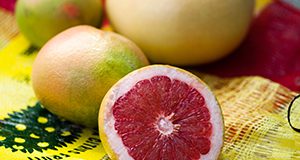
The authors of this 4-page fact sheet, Yan Heng, Mitzey Tejeda, and Lisa House, used a national survey to analyze and understand French consumer preferences and consumption behavior regarding grapefruit. They found that more than half of the respondents were willing to purchase grapefruit in the upcoming year, suggesting that French consumers hold an overall positive image of grapefruit. As a major and well-recognized supplier providing high-quality products, Florida has the opportunity to continue producing and exporting grapefruit to France. Published by the UF/IFAS Food and Resource Economics Department.
https://edis.ifas.ufl.edu/fe1072
Timber Inventory: A Primer for Landowners
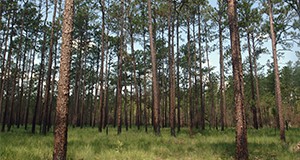
This 7-page fact sheet written by John Dooner and Michael Andreu and published by the UF/IFAS School of Forest Resources and Conservation outlines a process called timber cruising, surveying timber inventory to estimate the current volume and value of a timber stand. The authors explain the process of timber cruising from initial tree-level measurements to the final total stand-level estimates and various methods for conducting the cruise.
https://edis.ifas.ufl.edu/fr426
Sea Turtle Conservation: Priorities for Environmental Education Efforts
All five species of sea turtle that occur in Florida are in danger of extinction. This 4-page fact sheet written by Jessica E. Swindall, Holly K. Ober, Margaret M. Lamont, and Raymond R. Carthy and published by the UF/IFAS Department of Wildlife Ecology and Conservation discusses common human actions that are harmful to sea turtles and provides insight on key environmental education topics.
https://edis.ifas.ufl.edu/uw465
